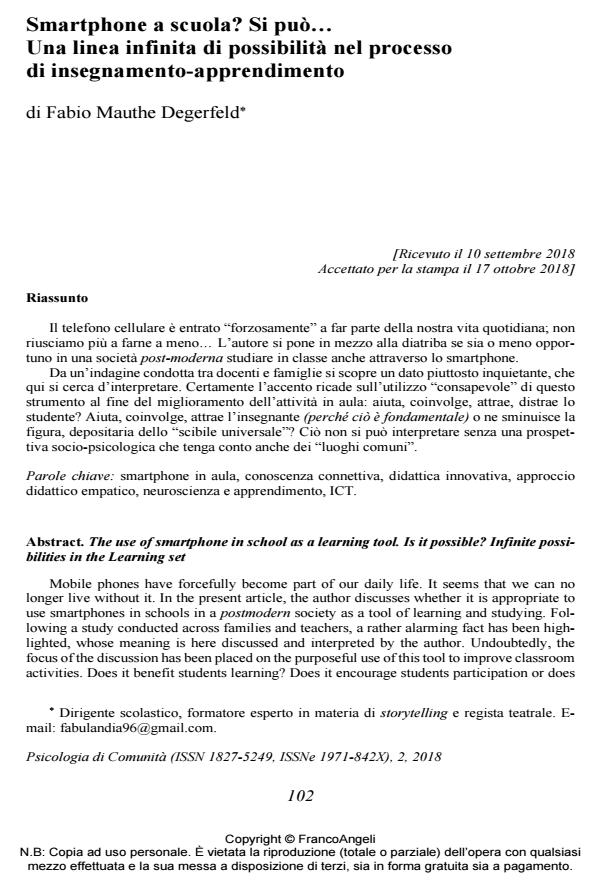The use of smartphone in school as a learning tool. Is it possible? Infinite possibilities in the Learning set
Journal title PSICOLOGIA DI COMUNITA’
Author/s Fabio Mauthe Degerfeld
Publishing Year 2018 Issue 2018/2
Language Italian Pages 10 P. 102-111 File size 195 KB
DOI 10.3280/PSC2018-002009
DOI is like a bar code for intellectual property: to have more infomation
click here
Below, you can see the article first page
If you want to buy this article in PDF format, you can do it, following the instructions to buy download credits

FrancoAngeli is member of Publishers International Linking Association, Inc (PILA), a not-for-profit association which run the CrossRef service enabling links to and from online scholarly content.
Mobile phones have forcefully become part of our daily life. It seems that we can no longer live without it. In the present article, the author discusses whether it is appropriate to use smartphones in schools in a postmodern society as a tool of learning and studying. Fol-lowing a study conducted across families and teachers, a rather alarming fact has been high-lighted, whose meaning is here discussed and interpreted by the author. Undoubtedly, the focus of the discussion has been placed on the purposeful use of this tool to improve class-room activities. Does it benefit students learning? Does it encourage students participation or does it deflect their attention? More importantly, is it equally as important for teachers, or is this "ever so knowledgeable" technology gradually discrediting teachers professional role? The arguments above cannot be analysed without a socio-psychological perspective, which would also take into account its commonplaces.
Keywords: Good teaching whit smartphone, smartphone in school, empathic teaching ap-proach, networked knowledge, Information and Communication Technology, ICT.
Fabio Mauthe Degerfeld, Smartphone a scuola? Si può.. Una linea infinita di possibilità nel processo di insegnamento-apprendimento in "PSICOLOGIA DI COMUNITA’" 2/2018, pp 102-111, DOI: 10.3280/PSC2018-002009